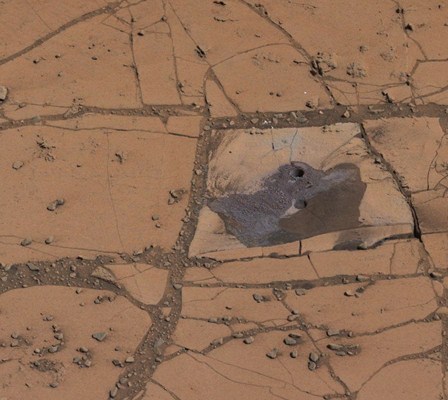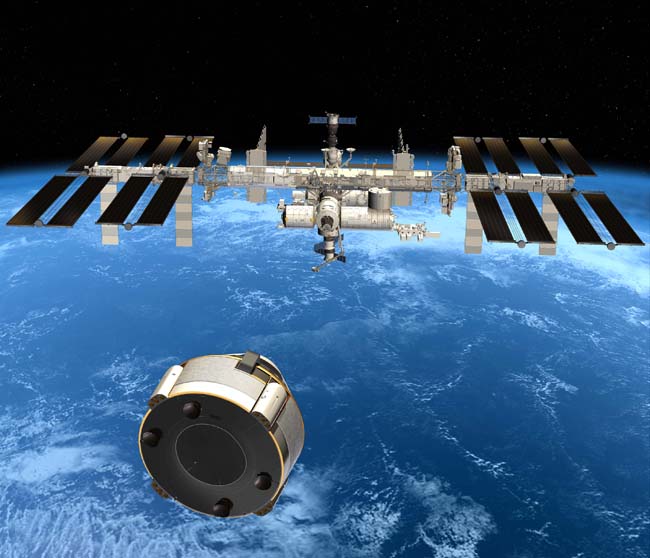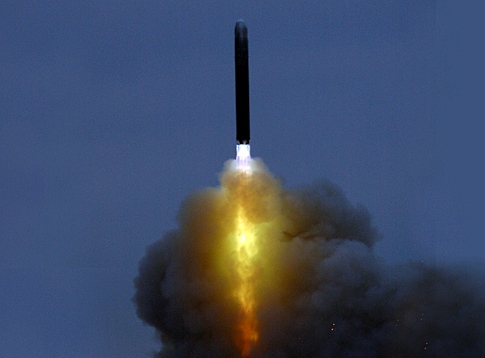
This image shows the first holes drilled by NASA's Mars rover Curiosity at Mount Sharp. Photo: NASA/JPL-Caltech/MSSS
WASHINGTON (PTI): NASA's Mars rover Curiosity has discovered the first mineral match from the Martian surface, the US space agency has announced.
Reddish rock powder from the first hole drilled into a Martian mountain by Curiosity has yielded the mission's first confirmation of a mineral mapped from orbit.
"This connects us with the mineral identifications from orbit, which can now help guide our investigations as we climb the slope and test hypotheses derived from the orbital mapping," said Curiosity Project Scientist John Grotzinger, of the California Institute of Technology in Pasadena.
Curiosity collected the powder by drilling into a rock outcrop at the base of Mount Sharp in late September. The robotic arm delivered a pinch of the sample to the Chemistry and Mineralogy (CheMin) instrument inside the rover.
This sample, from a target called "Confidence Hills" within the "Pahrump Hills" outcrop, contained much more haematite than any rock or soil sample previously analysed by CheMin during the two-year-old mission.
Haematite is an iron-oxide mineral that gives clues about ancient environmental conditions from when it formed.
In observations reported in 2010, a mineral-mapping instrument on NASA's Mars Reconnaissance Orbiter provided evidence of haematite in the geological unit that includes the Pahrump Hills outcrop.
The landing site is inside Gale Crater, an impact basin about 154 kilometres in diameter with the layered Mount Sharp rising about five kilometres high in the centre.
"We've reached the part of the crater where we have the mineralogical information that was important in selection of Gale Crater as the landing site," said Ralph Milliken of Brown University, Providence, Rhode Island.
"We're now on a path where the orbital data can help us predict what minerals we'll find and make good choices about where to drill. Analyses like these will help us place rover-scale observations into the broader geologic history of Gale that we see from orbital data," said Milliken.
Much of Curiosity's first year on Mars was spent investigating outcrops in a low area of Gale Crater called "Yellowknife Bay," near the spot where the rover landed.
The rover found an ancient lakebed. Rocks there held evidence of wet environmental conditions billions of years ago that offered ingredients and an energy source favourable for microbial life, if Mars ever had microbes.
Clay minerals of interest in those rocks at Yellowknife Bay had not been detected from orbit, possibly due to dust coatings that interfere with CRISM's view of them.
The rover spent much of the mission's second year driving from Yellowknife Bay to the base of Mount Sharp.
The sample is only partially oxidised, and preservation of magnetite and olivine indicates a gradient of oxidation levels.
"That gradient could have provided a chemical energy source for microbes," researchers said.
 Previous Article
Previous Article Next Article
Next Article













The Indian Air Force, in its flight trials evaluation report submitted before the Defence Ministry l..
view articleAn insight into the Medium Multi-Role Combat Aircraft competition...
view articleSky enthusiasts can now spot the International Space Station (ISS) commanded by Indian-American astr..
view article